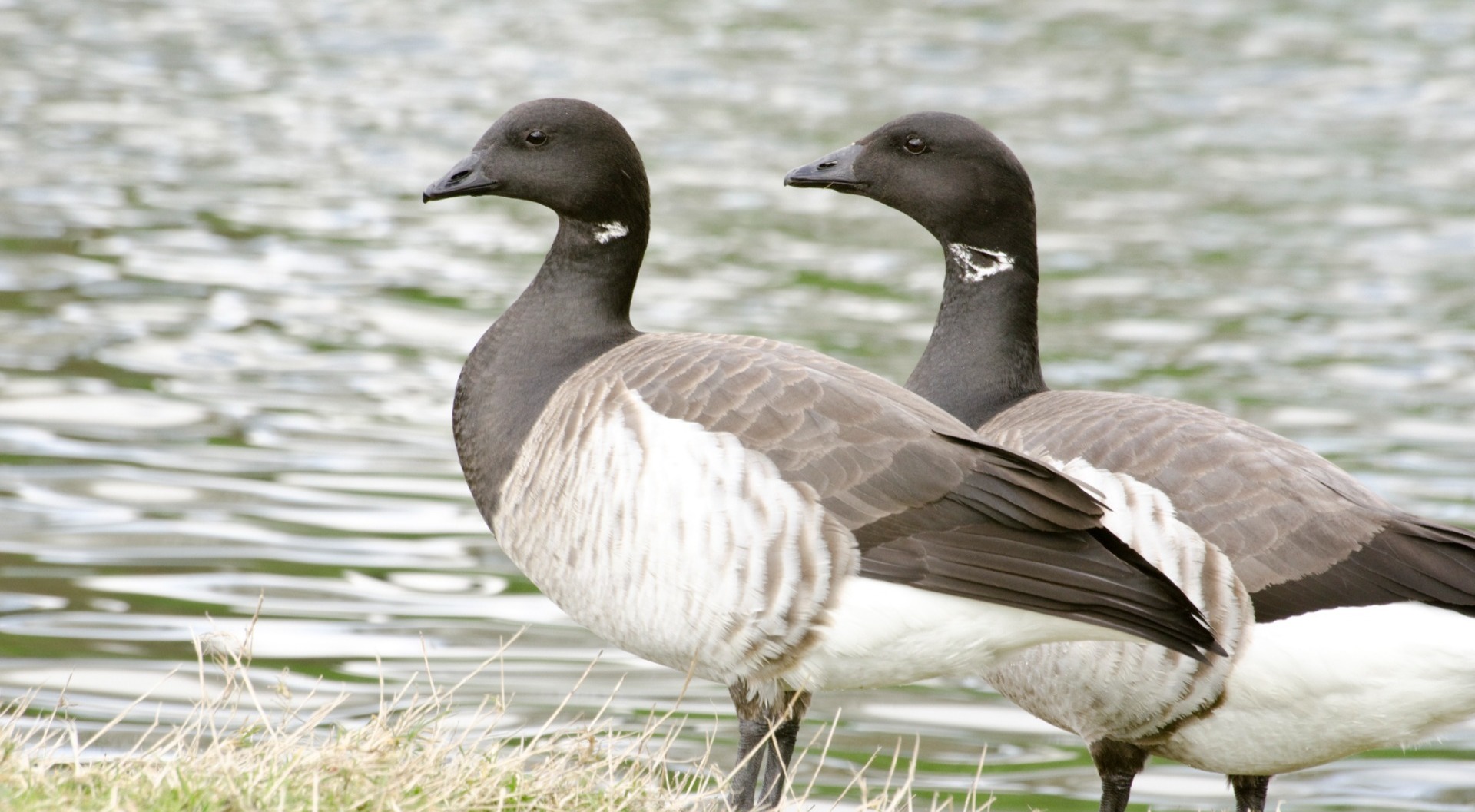Brent geese are a small (<2kg) long-distance migratory goose with a circumpolar breeding and temperate wintering distribution.
Of the 8 recognised flyway populations, the flyway population we are primarily focussed on breeds in eastern High Arctic Canada, migrates through and stages in Greenland and western Iceland and winters in north-west Europe, chiefly Ireland but also western Britain south to northern France.
MIGRATORY CYCLE
October – March: Ireland (also western Britain, northern France and Jersey)
April – May: western Iceland
June – August: Arctic Canada (Ellesmere, Axel Heiberg, Devon and Bathurst Islands primarily)
September: western Iceland

SOCIAL BEHAVIOUR
Generally occurs at low densities in the breeding range but through much of the year form flocks comprising singletons, pairs and family units. The family units, comprising 1 – 6 young, remain together from the breeding season until the spring staging period about 9 months later.
FACTS AND FIGURES
Population size has ranged from 10,000 (1960s) to c. 40,000 (2010). Annual productivity fluctuates widely from 0.1% to almost 25%. Mean brood size in good years 2-3 goslings/pair (age and brood size estimates made in autumn). Heaviest birds (peak mass in late spring: c. 2.2kg for males and females). Based on small sample, mean clutch size 4 eggs, laid mid-June, peak hatching early-mid July.

DIET AND FEEDING ECOLOGY
Like all brent goose populations this species is amongst the most resource-specific of all geese; the main food plant is inter-tidal eel-grass Zostera spp. Other inter-tidal and coastal vegetation is consumed during the year including green algaes (Enteromorpha and Ulva spp.) and saltmarshes grasses (e.g. Puccinellia). In the non-breeding season there is an increasing tendency for terrestrial grassland feeding (mainly Agostris and Poa) on farmland and amenity grasslands. In the breeding grounds a variety of arctic grasses and sedges are consumed.
DISPERSAL
Knowledge on the degree of fidelity to breeding sites is limited by the lack of study of marked individuals in the breeding range in consecutive years. Intensive marking throughout the range and observation at sites primarily in western Iceland and Ireland have revealed a high degree of site fidelity.

